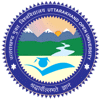|
Ch 1: Technology Framework in e-Learning
- 1.1: Introduction
- 1.2: Technology Analysis
- 1.3: Appropriate Technology
|
|
Ch 2: Learners Profile Analyze
- 2.1: Resources Availability At Learner's End
- 2.2: Selection of Technology To Match Resources
- 2.3: Meeting Objectives
|
|
Ch 3: Available Tools & Technologies for Delivering e-Content
- 3.1: Approaches for delivering e-Content.
- 3.2: Multimedia Learning Resources.
- 3.3: Technologies in Textual Deliveries.
- 3.4: Audio Technologies & Tools
- A) Audio File Formats
- B) Compression Techniques
- C) Audacity Audio Tool
- 3.5: Video Technologies & Tools
- A) File Formats
- B) Compression techniques
- C) Techniques by Easynow
|
|
Ch 4: Structuring & Presenting e-Content
- 4.1: Structuring content based on pedagogical concepts
- 4.2: Presenting content in different output formats
- 4.3: Authoring tools to create and manage content
- 4.4: Comparing eLML to other markup languages
- 4.5: Usability and marketing studies
|
|
Back To Course 5
|
|
Chapter 3.3 - Technologies in Textual Deliveries
Introduction
When it comes to delivering e-Content to the learners, we need a platform to incorporate all the text, audio, video, images and other digital content at one place. To integrate all this data, we require an application which not only facilitates the developer of e-Content, but also help learners to navigate through the appropriate information which s/he is looking for.
Various tools are available for integrating all the e-Content at a centerlized place. These tools are called Content Management System (CMS) or Learning Management System (LMS).
In this unit, we are going to discuss about these tools one by one.
CMS – Content Management System
A content management system (CMS) is a computer software system for organizing and facilitating collaborative creation of documents and other content. CMS is deployed as web application for easily managing web sites/content for various courses among universities and educationist around the world. CMS‟s make web page content management simple for even non-technical users, allowing designated users to change most aspects of their sites themselves, without the intervention of a web developer. Anyone with basic word processing skills can easily learn to manage the CMS deployed for your website.
Before We Begin - technical requirements
All the CMS / LMS runs on open source software (OSS) and follow SCORM's principles which require LAMP services (Linux, Apache, MySQL & PHP). A server must meet these required tools to run any CMS. As most of the Users may not be having Linux Operating Systems or Servers available with them. For those, these tools (Apache, MySQL & PHP binaries) can be installed on a Windows Operating System / Servers.
Once installed all above said services, a MySql database is the only thing which is required for installing your CMS application as its login credentials - Username and password will be required for mapping with you CMS/LMS.
TIP: A CMS should be accessible by learners publically, for that one should deploy your CMS on a web server which meets foresaid requirement.
Why do we need CMS?
Up until recently, changes to Divisional websites were done primarily by web developers themselves. This meant that, whenever a department had a page update, these changes had to be sent to the developers to post on their behalf. The process, while more centralized, doesn‟t facilitate timely delivery of web content, nor does it necessarily encourage departments to keep their sites up-to-date, of their own accord. In a CMS, pages and content can be added via a browser interface without requiring users to understand “web” languages such as HTML and CSS (although knowing these languages makes the process even easier). A CMS, in essence, is very much an enabler of end users, as it shifts a large degree of control to the end departments. Currently, most sites within the Division of Student Affairs are in the process of being converted to content management systems, if they aren‟t already. Any site that has content that changes more than a few times a year is a particularly good candidate for conversion to a CMS.
Widely available LMS/CMS Systems
- Joomla
- Moodle
- Blackboard
- Wordpress - Blog
Next
|
|
